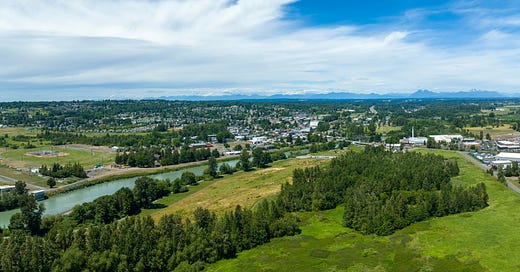Counting the costs of annexations
Plus campaign cash in hot Senate races and more recommended reading/listening
A novel turf war north of Bellingham has lawmakers mulling rule changes over how local governments can redraw your backyard.
This story has to do with annexation, the process by which cities grow their borders and their tax bases. For cities, that means reeling in neighboring unincorporated land, usually when enough residents petition to join to prompt the city council’s blessing.1 The land in question—often the pastoral variety—is otherwise governed by the county, which might have a vested interest in fencing it off for timber, farmland, and other bucolic amenities.
The problem? You tend to get dueling building codes and incentives that can ring up a big bill for cities aiming to annex something that’s not built up to their standards.
Take Ferndale. For years, the city of 15,000 people near the Canadian border’s been loath to annex much given the steep cost of serving new residents. Ferndale City Manager Jori Burnett told the House Local Government Committee as much last week. It boils down to impact fees: the one-time fees governments charge builders for new developments to fund related services. Whatcom County opted not to collect in the name of incentivizing development on the cheap. It’s also costing Ferndale.2
Keep reading with a 7-day free trial
Subscribe to The Washington Observer to keep reading this post and get 7 days of free access to the full post archives.





